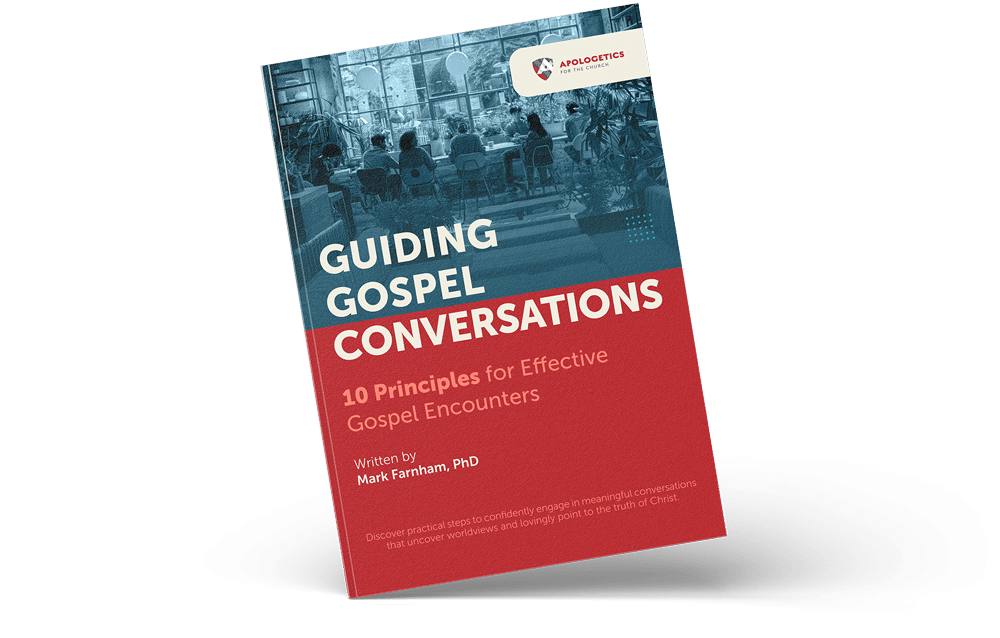Download The Free Guide
Discover practical conversation skills to get unbelievers thinking and make way for the Spirit’s work in their lives.
"*" indicates required fields
Guest Post by Jeff Mindler
Proverbs 26:4-5 reads, “4Answer not a fool according to his folly, lest you be like him yourself. Answer a fool according to his folly, lest he be wise in his own eyes.”
This, in its simplest form, is the two-step procedure of the apologetic task. While engaging in dialogue with someone and defending the faith, it is always helpful to have this verse in mind and to carry out this procedure with the unbeliever. To help us understand what this means and what it looks like, Greg Bahnsen states,
“Here he [Solomon] is instructing you to temporarily stand on the presuppositions of the unbeliever, not as a matter of neutrality and compromise, not as endorsing his worldview procedures. Rather, he does so in order for you to show the unbeliever the vanity of attempting to explain the world and life from his own perspective. You must let him know that you are taking his position only momentarily, just “for the sake of argument.”
This is a critical element to remember at this point, we are not surrendering our ultimate authority of Scripture in this step, but merely answering the unbeliever according to their own worldview temporarily. We do not assume neutrality at this point but we do want to show the unbeliever where his own worldview leads according to its own tenets. Bahnsen continues,
“In this step you will be showing the unbeliever that on his own autonomous presuppositions he cannot justify reality, knowledge, logic, morality, value, meaning, purpose – or anything. You want to show him the outcome of his worldview when his principles are fully followed out. Thus, Solomon allows that you may, “answer a fool according to his folly” – so that the fool will see the error of his being “wise in his own eyes” (Prov 26:5b). If you adopt the unbelievers procedures as your actual apologetic, he will suppose himself to have the correct position. Whereas, if you only theoretically adopt his presuppositions in order to demonstrate his error, then you are being faithful to the biblical model of apologetics.” [1]
Thus, this is our apologetic task and our procedure in answering objections to the christian faith and we do this with gentleness and respect (1 Peter 3:15). If we keep this two step procedure in mind while engaging with unbelievers, we will be well on our way in giving a defense for the hope that is within us and by so doing, God will be glorified, and this after all, is our goal in faithful apologetics. Soli Deo Gloria!
[1] Bahnsen, Greg. Pushing the Antithesis. 163
By Brandon Anchant, Intern In today’s Christian community, there exists a pervasive atmosphere of a pharisaical mindset. This mindset is characterized by...
By Brandon Anchant, Intern I was speaking with my friend Ralph at the climbing gym where I work. He is a sixty-something Englishman with a rather spicy...
In history, unbelief has taken multiple forms. Many people grapple with questions about faith, spirituality, and the existence of God. In this blog, we will explore the top three reasons for unbelief, drawing insights from a compelling conversation between Pastor Jeff Durbin and an atheist at an anti-abortion rally.